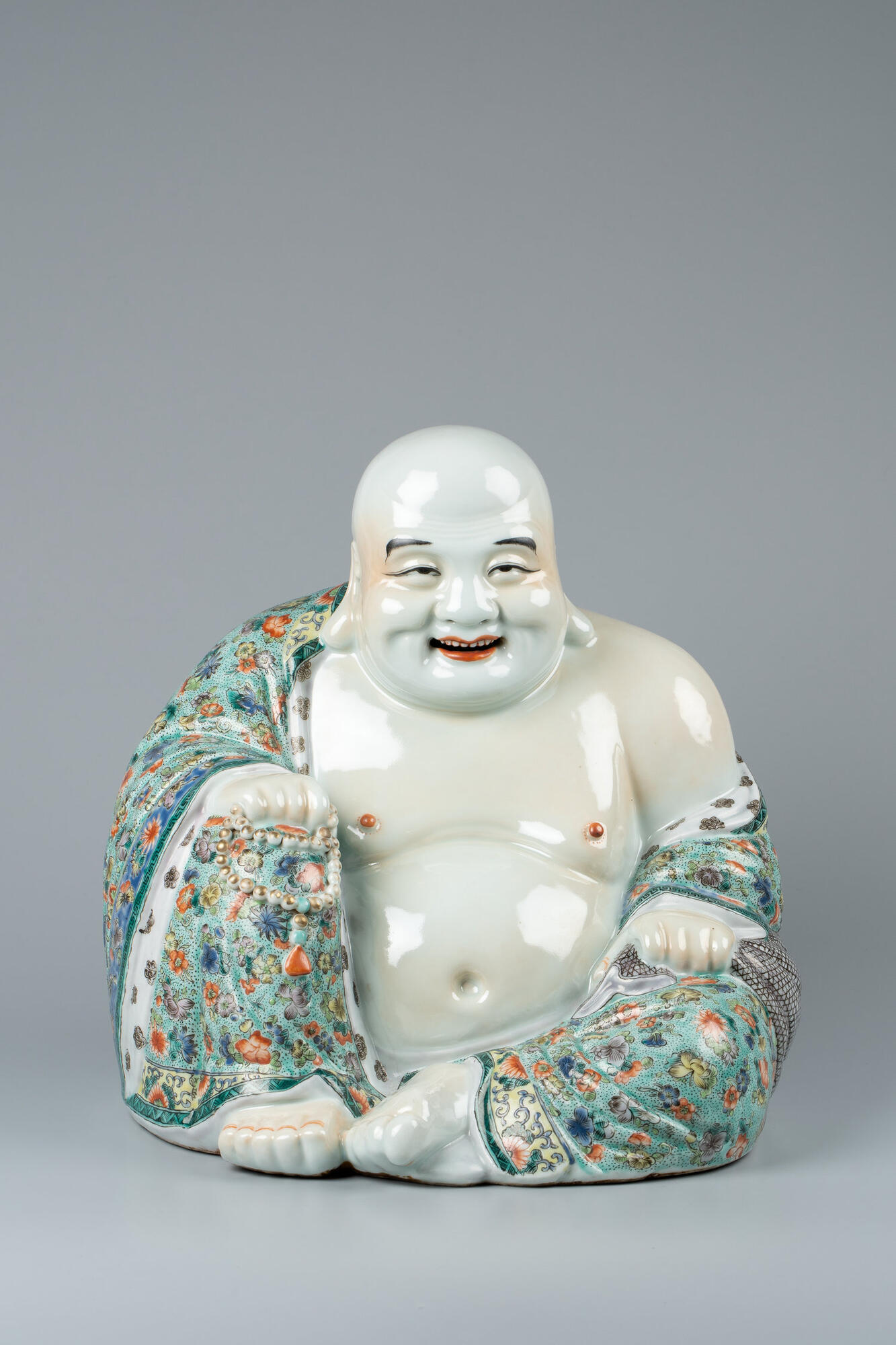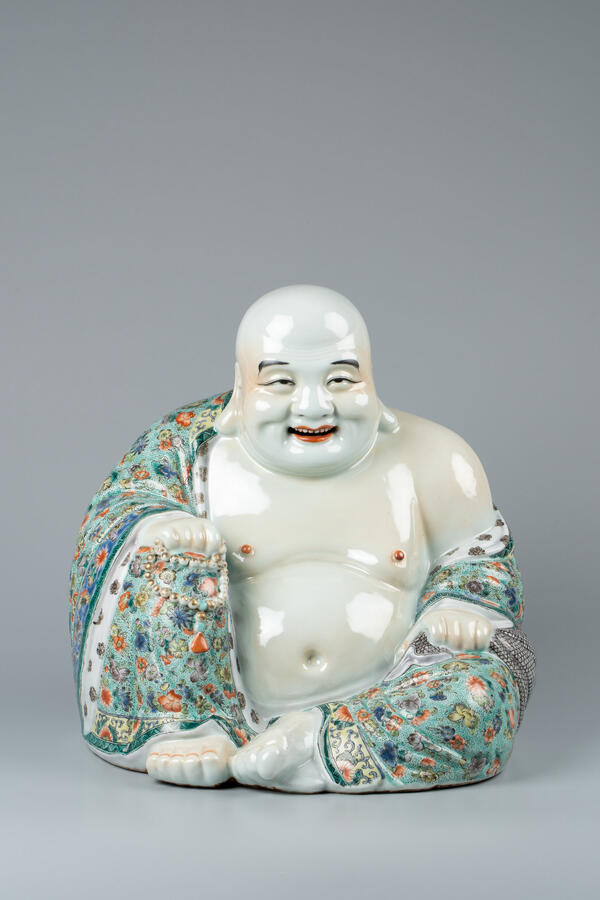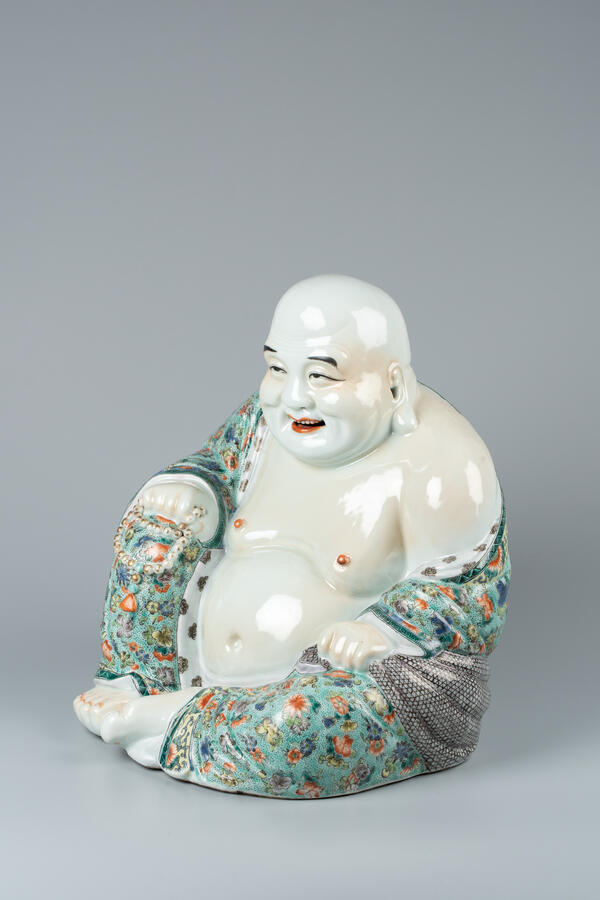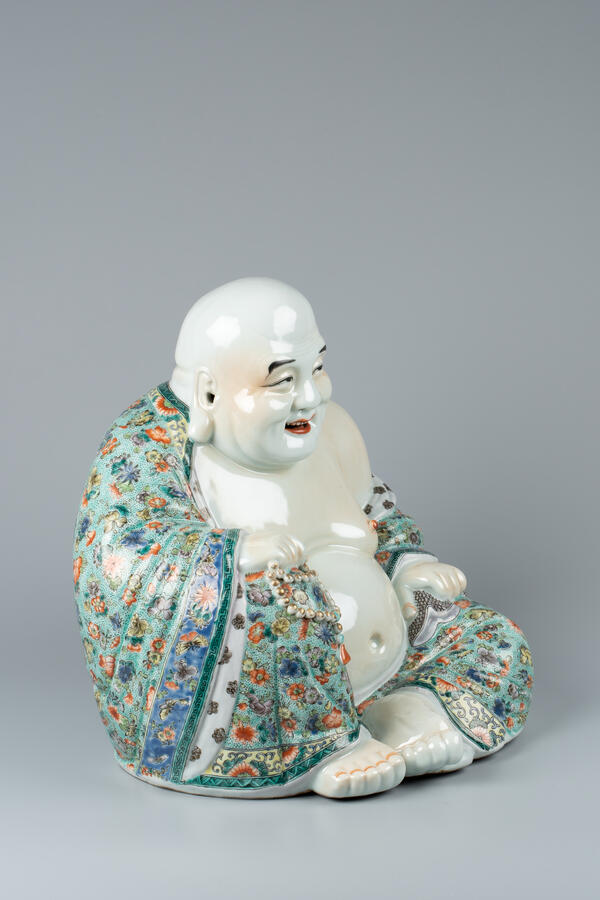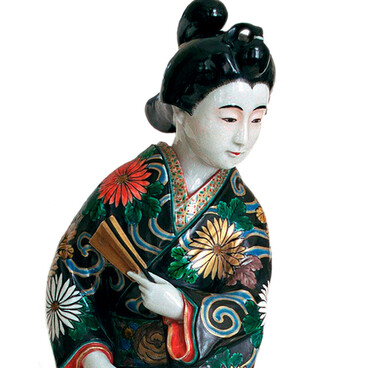The Samara Regional Art Museum houses a variety of Chinese porcelain items. One of them is a vibrant example of Chinese porcelain sculpture, a figurine of the prophesized Buddha — Mile or Budai (Maitreya) by artist Zhi Fu from the Dehua workshops in the Fujian province, China.
Chinese porcelain has been a fundamental aspect of Chinese culture and art for centuries. The history of Chinese porcelain spans more than three thousand years. During the Qing dynasty (1644 — 1912), the production of all previously existing types of porcelain was continued. Jingdezhen factories produced highly artistic products of various shapes and colors. Porcelain items not only flooded the domestic market of the Celestial Empire — they became the main export item, and for several centuries, the European monarchs, who admired porcelain, dreamed of possessing the secret of producing “white gold”.
The sculpture of Mile was made in accordance with the porcelain manufacturing technology of the late 17th — early 18th century, the reign of the Kangxi Emperor (1662 — 1722). In Europe, Chinese porcelain was divided into groups or families depending on the color of the prevailing enamel or glaze: there were blue, pink, black and green families. The figurine from the museum collection belongs to the “green family”. It is likely that the statuette is an author’s copy of the item of an earlier time. Chinese artists frequently made copies as a sign of respect for the past.
Mile is a god of wealth, fun and prosperity, the Buddha of future prosperity in the Chinese tradition. According to Chinese legends, he once came to people as a monk-wanderer and walked around the villages in an open robe. Joy, laughter, wealth and happiness came to the people along with him. But nobody recognized the Buddha. He traveled around the world with a large empty canvas bag and rosary beads. The monk brought good luck, health and wealth to people and infected everyone with carefree sincere laughter. When asked what was stored in his bag, the monk replied that there were countless inexhaustible virtues inside. Since the antient times, the figurine of Mile has been deemed in China as a symbol of future prosperity. It is said that his laughter is the laughter of all the people of the world.
Chinese porcelain has been a fundamental aspect of Chinese culture and art for centuries. The history of Chinese porcelain spans more than three thousand years. During the Qing dynasty (1644 — 1912), the production of all previously existing types of porcelain was continued. Jingdezhen factories produced highly artistic products of various shapes and colors. Porcelain items not only flooded the domestic market of the Celestial Empire — they became the main export item, and for several centuries, the European monarchs, who admired porcelain, dreamed of possessing the secret of producing “white gold”.
The sculpture of Mile was made in accordance with the porcelain manufacturing technology of the late 17th — early 18th century, the reign of the Kangxi Emperor (1662 — 1722). In Europe, Chinese porcelain was divided into groups or families depending on the color of the prevailing enamel or glaze: there were blue, pink, black and green families. The figurine from the museum collection belongs to the “green family”. It is likely that the statuette is an author’s copy of the item of an earlier time. Chinese artists frequently made copies as a sign of respect for the past.
Mile is a god of wealth, fun and prosperity, the Buddha of future prosperity in the Chinese tradition. According to Chinese legends, he once came to people as a monk-wanderer and walked around the villages in an open robe. Joy, laughter, wealth and happiness came to the people along with him. But nobody recognized the Buddha. He traveled around the world with a large empty canvas bag and rosary beads. The monk brought good luck, health and wealth to people and infected everyone with carefree sincere laughter. When asked what was stored in his bag, the monk replied that there were countless inexhaustible virtues inside. Since the antient times, the figurine of Mile has been deemed in China as a symbol of future prosperity. It is said that his laughter is the laughter of all the people of the world.
